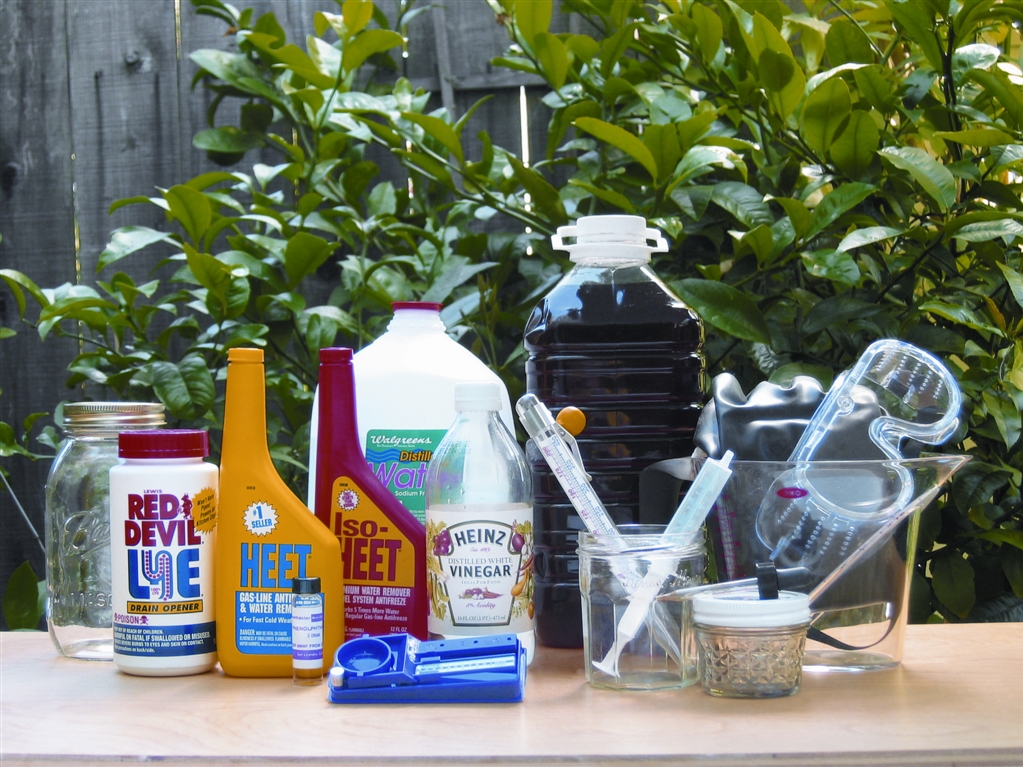It’s easy to make a small batch of biodiesel that will work in any diesel engine, from a model airplane engine to the family car. You don’t need any special equipment — an old juice bottle will serve as the “reactor” vessel — and on such a small scale you can quickly refine your technique and perform further experiments. After a few liters’ worth of experience, you’ll know if you’ve been bitten by the biodiesel bug.
The principle behind biodieseling is to take vegetable oil (either new or used), and process it into a fuel that’s thin enough to spray from a regular diesel engine’s fuel-injection system. This is done chemically, by converting the oil into two types of compounds: biodiesel, which shares the original oil’s combustibility, and glycerin, which retains the oil’s thick, viscous properties. Drain away the glycerin, and you’re left with a fuel that you can pour into any diesel vehicle with no further modification.
Once you get to the far side of the learning curve, making biodiesel is very much like cooking. In fact, a commercial biodiesel production plant shares more in common with a large-scale bakery than a petroleum refinery. There’s organic chemistry involved in baking a cake, but most bakers wouldn’t consider themselves organic chemists.


